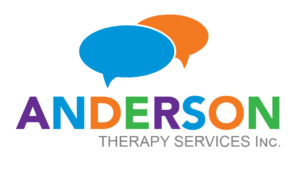What is Stuttering?
Anderson Therapy Services has been collaborating and working with Indigenous/First Nations, Inuit and Métis communities across Northern Canada, Ontario and Quebec.
Individuals with fluency disorders have difficulties with the flow and rhythm of speech. It is commonly known as a stutter.
This occurs when an individual experiences syllable, word, or phrase repetitions (“I wah, wah, want to go.”), prolongations (“I wwwwant to go.”) and/or blocking (“I——want to go.”). Often, individuals who stutter demonstrate additional behaviors such as poor eye contact and avoidance of difficult words. They may also present with secondary behaviors such as eye blinking or fist clenching. Stuttering may look different from one individual to another and can range from a single word repetition (“My-my dad went to the store”) to an extended block (i.e. can’t get the word out).
Seeking therapy may increase a speaker’s confidence, as well as reduce the likelihood of social withdrawal or avoidance of certain communication situations (e.g. speaking to teachers, answering questions in class, oral presentations). Treatment approaches are dependant on the client’s age and severity. Methods include programs such as Lidcombe Program for Early Intervention for Stuttering, The Essential Pause and other fluency shaping techniques.
What is a Voice Disorder?
Voice disorders are characterized by a mismatch between the sound of an individual’s voice and their age, size and/or gender. This may include abnormal loudness, pitch or overall voice quality. For example, a child yelling excessively on the playground or a teacher who habitually speaks in noisy conditions may develop vocal polyps or nodules, which cause a hoarse voice.
Resonance disorders are characterized by a difference in airflow through the nose and mouth. This may include hypernasality (excessive emission of air through the nose) or hyponasality (a lack of appropriate nasal airflow during speech, such as when a person has nasal congestion). For example, a child born with a cleft palate may have velopharyngeal insufficiency (improper closing of the soft palate muscle in the mouth during speech, allowing air to escape through the nose instead of the mouth) resulting in hypernasality.
Our therapy services for Indigenous/First Nations, Inuit and Métis communities can be accessed in remote areas using our online videoconferencing technology as well as on-site visits. Our unique service delivery model, in partnership with communities, has helped many First Nations children and youth achieve success across various needs.
Are Difficulties Holding You Back?
Let us know how we can help.
The clinicians at Anderson Therapy Services will try their best to work with your schedule and offer you therapy services at your convenience. To learn more about our services, contact us at (289) 238-8598 or at info@andersontherapy.ca
Proudly serving Indigenous, First Nations and Aboriginal communities across Northern Canada, Ontario and Quebec.

